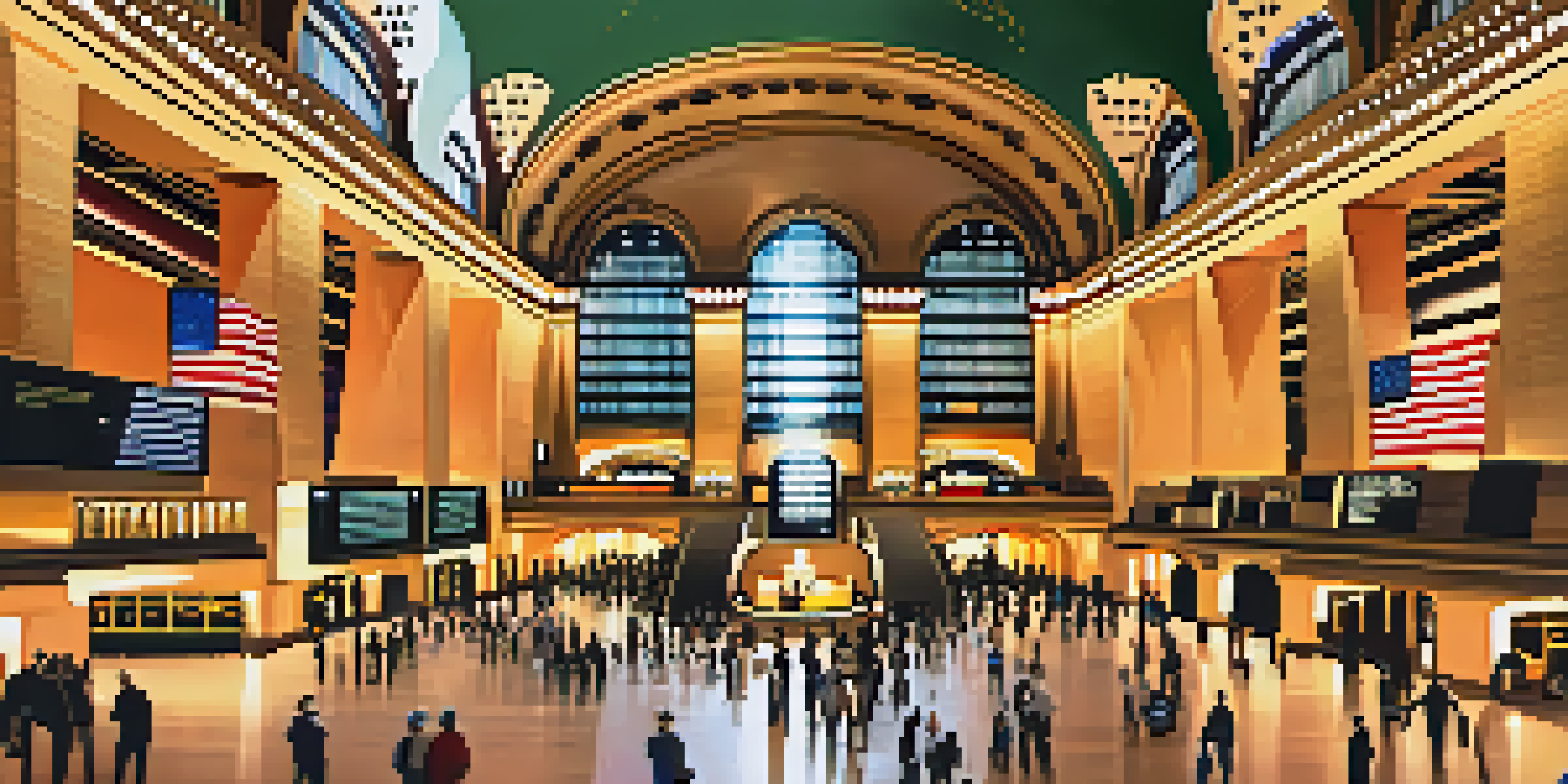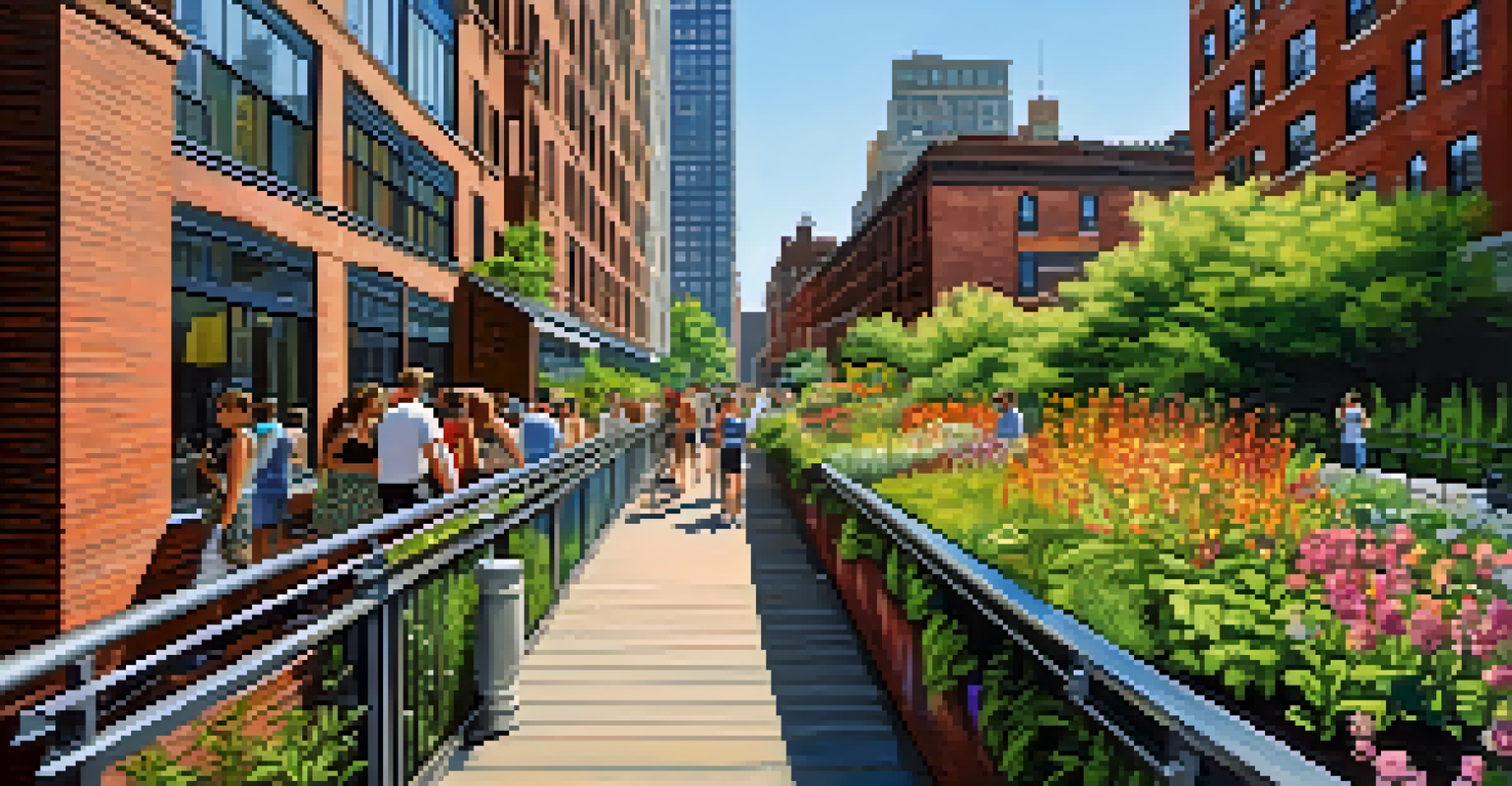Famous Preservation Success Stories in New York City

The Restoration of Grand Central Terminal: A Timeless Marvel
Grand Central Terminal, an iconic symbol of New York City, faced the threat of demolition in the 1970s. Thanks to a passionate public outcry and preservation efforts, the terminal underwent a meticulous restoration. Today, it stands as a testament to architectural beauty and functionality, welcoming millions of visitors each year.
Preservation is a form of optimism; it’s an act of faith in the future.
The restoration included repairing its stunning celestial dome and revitalizing the concourse, ensuring visitors could once again appreciate its grandeur. This project not only preserved a historic landmark but also reinvigorated the surrounding area, proving that preservation can stimulate economic growth.
Grand Central Terminal showcases how dedicated preservation efforts can save not just a building, but the spirit of a city. It's a reminder that our heritage can coexist with modern life, enriching our experiences and connections to the past.
The High Line: Transforming an Old Railway into a Green Oasis
Originally an elevated freight rail line, the High Line was on the brink of demolition before community advocates stepped in. Their vision for a linear park transformed this neglected space into a vibrant urban greenway. Today, it features gardens, art installations, and stunning views of the Hudson River, attracting millions of visitors annually.

The High Line's success lies in its ability to blend nature with urban life, creating a unique experience that encourages community engagement and environmental appreciation. It has inspired similar projects across the globe, demonstrating the potential of reimagining urban spaces.
Community Drives Preservation Success
Passionate community involvement has played a crucial role in preserving New York City's iconic landmarks and neighborhoods.
This transformation highlights the importance of community involvement in preservation. By rallying together, New Yorkers turned a forgotten railway into a beloved public space, proving that with vision and determination, even the most overlooked areas can flourish.
The Fight to Save The Tenement Museum: A Cultural Beacon
The Tenement Museum, located on the Lower East Side, tells the story of immigrant life in New York City. When it was threatened by neglect and financial struggles, preservationists and community advocates rallied to save it. Their efforts culminated in a successful fundraising campaign, ensuring the museum could continue to educate visitors about the diverse history of the city's immigrants.
The past is never dead. It's not even past.
Visitors can explore restored apartments and learn about the daily lives of families who lived there. This immersive experience not only preserves the physical space but also keeps the stories of these communities alive, fostering a deeper understanding of the city's rich cultural tapestry.
The Tenement Museum serves as a powerful reminder of the importance of preserving cultural heritage. It highlights how targeted efforts to save historical sites can help us honor our past and learn from it, creating a more inclusive narrative for future generations.
Brooklyn’s Historic Brownstones: A Love Affair with Preservation
The charming brownstones of Brooklyn are more than just beautiful buildings; they represent a significant part of the borough's history. In the 1960s, many faced demolition due to urban development pressures. However, the rise of preservation movements led to landmark designations, protecting these architectural gems for future generations.
Today, these brownstones are cherished homes and vibrant spaces, showcasing classic design elements like stoops and cornices. Their preservation has also contributed to the area's gentrification, sparking discussions about community identity and the balance between development and historical integrity.
Historical Sites Boost Local Economies
Preserving historical sites not only honors the past but also enhances local economies and fosters community pride.
The story of Brooklyn's brownstones illustrates how preservation can enhance a neighborhood's character while also sparking dialogue about change. It’s a delicate dance, but one that ultimately enriches the community’s identity and connection to its past.
The Chrysler Building: A Gleaming Icon of Art Deco Architecture
The Chrysler Building, an Art Deco masterpiece, is one of New York City's most recognizable skyscrapers. Built in the late 1920s, it faced potential obscurity as newer developments emerged. Thanks to a dedicated preservation movement, it was saved and restored, maintaining its status as an architectural icon.
Efforts to preserve the Chrysler Building included restoring its stunning lobby and iconic spire, ensuring that visitors can enjoy its breathtaking design. The building serves as a symbol of the innovation and craftsmanship of its time, capturing the imagination of all who see it.
This success story showcases how iconic structures can be preserved to inspire future generations. The Chrysler Building stands not only as a triumph of design but also as a reminder of the importance of protecting our architectural heritage for all to appreciate.
The Bowery: Preserving a Historic Neighborhood’s Unique Character
The Bowery, once a gritty part of Manhattan, has undergone significant change over the years. Despite facing rapid gentrification, preservationists have worked tirelessly to maintain the neighborhood's unique character. This effort has included protecting historic buildings and promoting local businesses that reflect the Bowery’s rich cultural history.
By advocating for the preservation of its historic sites, community leaders have ensured that the Bowery retains its charm and authenticity. The mix of old and new creates a vibrant atmosphere that attracts both locals and tourists, celebrating its past while embracing the future.
Heritage Enriches Urban Identity
The preservation of cultural heritage enriches urban spaces, allowing history and modern life to coexist harmoniously.
The Bowery's preservation success underscores the need to balance development with heritage. It serves as a reminder that even in a rapidly changing urban landscape, we can honor our history while creating spaces that continue to evolve.
The Statue of Liberty: A Lasting Symbol of Freedom and Resilience
The Statue of Liberty, a gift from France, has stood as a symbol of hope and freedom since 1886. Over the years, she has faced challenges, including weathering and the threat of closure due to declining visitor numbers. Preservation efforts, including extensive restoration in the 1980s, have ensured that she remains a beacon of inspiration.
The restoration included structural reinforcements and the replacement of her torch, allowing her to shine brightly for visitors from around the world. Today, the statue welcomes millions each year, reminding us of the values of liberty and resilience.

The ongoing preservation of the Statue of Liberty illustrates the importance of maintaining our cultural symbols. It serves as a powerful reminder that, through dedicated efforts, we can ensure that our heritage continues to inspire and educate future generations.
The Importance of Preservation: Lessons from NYC's Success Stories
New York City's preservation success stories offer valuable lessons about the importance of protecting our heritage. Each story exemplifies the power of community involvement, showcasing how passionate individuals can make a difference. From iconic landmarks to cherished neighborhoods, these efforts remind us that history is worth preserving.
Moreover, these successes demonstrate the economic and cultural benefits of preservation. By maintaining our historical sites, we not only honor our past but also create vibrant spaces that enhance local economies and foster community pride.
Ultimately, the preservation of New York City's treasures teaches us that history is not just about buildings; it's about the stories and memories they hold. As we look to the future, let these success stories inspire us to protect and celebrate our own communities.